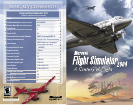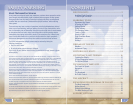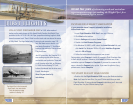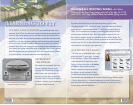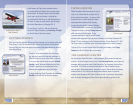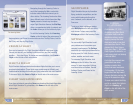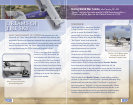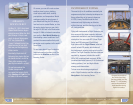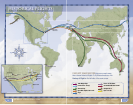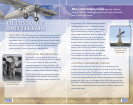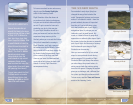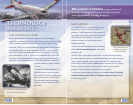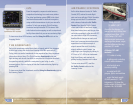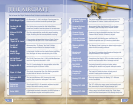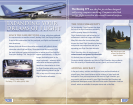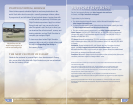
FLIGHT SIMULATOR 2004
16
A CENTURY OF FLIGHT
17
Corbis
In the spring of 1927, aviators lined up for another
challenge: ying nonstop from New York to Paris.
Many had already failed when Charles Lindbergh
tried a new and daring approach—simplicity—
using a single-engine plane own by a single pilot.
Lindbergh bounced down the muddy runway at
Roosevelt Field in the cloudy dawn of May 20, and
the world held its breath for more than 33 hours
as Lindbergh’s airplane was sighted at various
points en route. At long last, the buzz of an engine
was heard over Paris and the small silver airplane
circled, landed, and rolled to a stop. Suddenly,
Paris and New York were closer to each other, and
pilots gained a new perspective on distance and terrain.
A Flying Geography Lesson
In Flight Simulator, pilots don’t just y above the realistic terrain of an
arti cial world. They y above the terrain of this world, to and from highly
detailed cities and more than 23,000 airports, complete with taxiway and
runway signs. True-to-life aircraft soar above realistic ground textures that
replicate actual geographic features. Enhanced three-dimensional landmarks,
including the lighted signs of Las Vegas and the familiar iron arches of the
Eiffel Tower, combine with stunning natural landmarks like Niagara Falls, the
Grand Canyon, and Mount Everest to make Flight Simulator a unique tool for
exploring the planet.
Charles Lindbergh with
the Spirit of St. Louis
The Spirit of St. Louis
circles above Paris in
Flight Simulator.
The rst pilots spent much of their time ying precariously at
exhibitions and in aerial circuses. But it wasn’t long before they attempted
long-distance travel. In 1911, the rst aircraft ew across the entire United
States when Calbraith Rodgers piloted his “Vin Fiz” Wright EX biplane from
New York to Long Beach, California. During the 49-day journey, Rodgers
spent more than 82 hours in the air and crashed 69 times.
Crossing the Atlantic
For more than 15 years after the rst powered
ight at Kitty Hawk, no airplane had own nonstop
across an ocean. Over land, pilots could often
remedy emergencies by landing for repairs. Over
open water, however, any malfunctions, mechanical
failures, or mistakes turned all the more critical.
In 1919, the transatlantic crossing became reality.
John Alcock and Arthur Whitten Brown piloted a
Vickers Vimy from Newfoundland to Ireland in just
under 16 hours.
Of Distance
and Terrain
After a night dodging storms over the Atlantic
Ocean, Charles Lindbergh crossed the coast of Ireland
just 3 miles off course.



